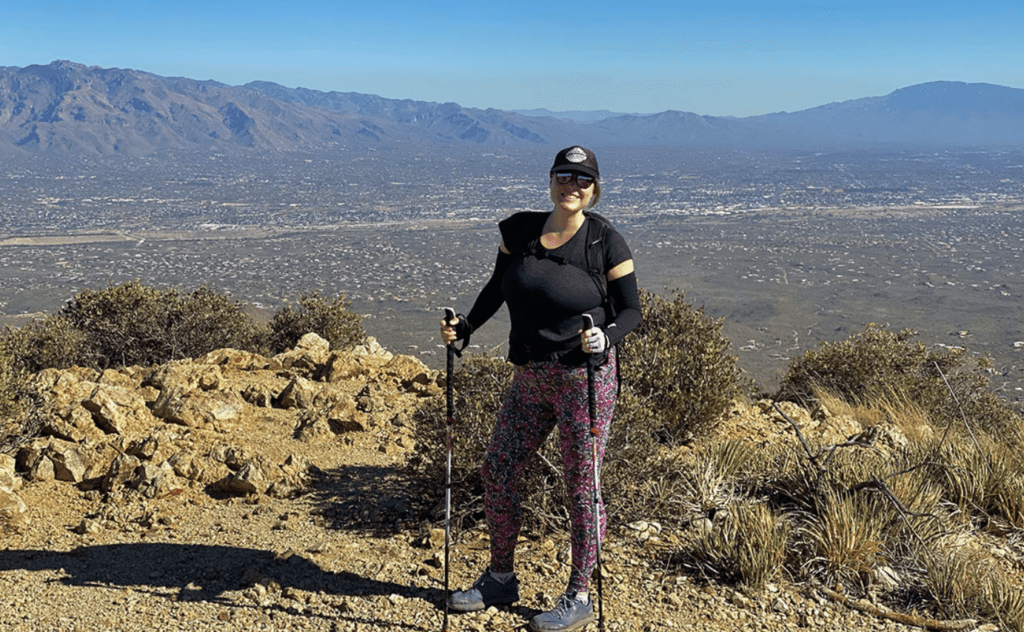Daniel Salzler No. 1262 EnviroInsight.org Five Items July 12, 2024
—————Feel Free To Pass This Along To Others——————
If your watershed is doing something you would like others to know about, or you know
of something others can benefit from, let me know and I will place it in this Information .
If you want to be removed from the distribution list, please let me know.
Please note that all meetings listed are open.
Enhance your viewing by downloading the pdf file to view photos, etc.
The attached is all about improving life in the watershed through knowledge.
If you want to be removed from the distribution list,
please let me know. Please note that all meetings listed are open.
Check our website at EnviroInsight.org
- How To Hike Safely In The Heat. Temperatures are rising, so protect yourself with these extra precautions.
The World Health Organization notes that heat stress is the leading cause of weather-related deaths, and it can exacerbate underlying illnesses such as diabetes, asthma, and cardiovascular disease. Heat is even more dangerous when accompanied by strenuous activity, as evidenced by a couple rescued while hiking in California recently. At the time of rescue, they were severely dehydrated, and one of them appeared to be unconscious, described by first responders as having a “severe condition” before being helicopter transported to the hospital.
Though extra precautions are required when hiking in the heat, it is still possible to get out and enjoy some terrific trekking this summer. Here’s what you need to know about safely hiking in the heat.
Safety in numbers and notifications
As the saying goes, there is safety in numbers, and according to Harvard Health Publishing, traveling in pairs is key when hiking in the heat. If you do head out hiking alone, they advise informing someone who is not in your party (say, a friend or family member who is home or at work) both of your anticipated route and when you expect to return.
Many national parks, state parks, and wilderness areas have sign-in books that are often located near trailheads. Signing in is optional, but it’s very smart and only takes a few seconds. The log usually requests your name, what hike you plan to do, and what time you’re starting it. Should you become lost, hurt, or disoriented while hiking, rangers may be able to find you quicker if they saw that you signed in for a hike but never signed out.
Considering humidity
Humidity is just as much a factor as the heat itself, so when looking at the weather forecast, consider both. When hiking in dry heat, your body can cool itself down a bit by sweating. However, in a humid area, sweat evaporates more slowly. When this happens, you sweat less and your body cannot cool itself as easily as it can in dry heat. So, even if you’re accustomed to hiking in dry 90-degree weather, you still may have a hard time hiking in 80-degree weather if it’s very humid.

Tara Alcantar, of Homegrown MTB (a mountain biking and trail guiding company in southern Arizona) says that travelers often underestimate how quickly heat illness can occur, or worse, turn to heat stroke. “With little to no shade and water in the desert when hiking, there’s no escape from sun exposure, which can zap your energy and cause symptoms such as nausea, exhaustion, muscle cramps, and even disorientation.”
Alcantar suggests that when hiking in the heat, opt for a route you’re familiar with, as “many hikers get turned around and end up lost with more time in the sun, which leads to exhaustion.” She advises planning your hikes early in the morning or late in the evening to avoid the peak mid-day heat. And regardless of the time of day and the route you had planned, she suggests checking local weather forecasts before heading out and making prudent choices about when and where to recreate. If it will be hotter than expected, or if a storm may develop, it would be best to switch or postpone your trek.
Hydration
Hiking guide JoAnn Lantz, who grew up in New York and now leads trekking tours in Italy with the hiking-focused tour company Wilderness Travel, stresses the importance of proper hydration, which goes beyond just water. She describes how one of the guests on a hiking tour she led fell ill simply because he didn’t hydrate properly. “He became very sick due to the imbalance of minerals in his body, as he wasn’t getting enough water, salts, or minerals.”
The solution is not as simple as many people think. Lantz explains that water alone is insufficient. “We lose salts and minerals like potassium and magnesium in our sweat, so it is important to keep our body in balance by adding these back through proper hydration.”
Mass-market electrolyte drinks like Gatorade tend to be the best-known source of electrolytes, but they often carry a high amount of sugar (as much as a soda). These are far from the only way to get these essential nutrients into your body while hiking. Coconut water and pickle juice also work, as do electrolyte tabs and powders that can be added to water in your reusable bottle. Some hiking backpack water reservoirs (also known as “bladders”) can also accommodate electrolyte tabs and powders. These electrolyte mixtures tend to be more natural than ready-made drinks (which often have artificial colors and flavors), and using them is cheaper and far more environmentally conscious than buying bottled drinks for every hot hike.
Alcantar adds an additional pro tip: Freeze a homemade electrolyte mix overnight and bring it with you on a hot day’s adventure. “The heat will soften the frozen liquid and turn it into a delightful slushy that is sure to reinvigorate a hot and tired body.”
What to wear and pack
According to Lantz, it’s extremely important to pack gear that will help you cope with high heat, which could include a light long-sleeved shirt, wide-brimmed hat, and sunscreen. The importance of wearing long-sleeved clothing is that it helps to protect your skin from the sun. Additionally, if the clothing is made from a very lightweight, breathable fabric, it can also help your skin feel cooler than if you were wearing a short-sleeved shirt, which would directly expose your skin to the sun.
Neck buffs and detachable arm sleeves can also help protect skin in the sun and be easily removed when you’re in the shade. These can also be dipped in water, which can help cool you down further when hiking. I’ve also seen people on hikes wrapping ice cubes into a neck buff then letting the cool water slowly drip down their head and neck while hiking.
Lantz also suggests a very European solution to sunny hiking: an umbrella or sun parasol. “You will be surprised by how effective it is and how much cooler you feel under the shade it creates, especially in high heat that is not accompanied by humidity.”
Text and photographs by Cassandra Brooklyn, “Sierra” The magazine of the SierraClub
2. ADEQ PM 2.5 Boundary Recommendation Information Sessions. The Arizona Department of Environmental Quality Invites Arizonans To Join Their Community Meeting On The Initial Draft Boundary Recommendations For The 2024 PM2.5 Air Quality Standards

The meetings will present information on the location of the initial draft boundary recommendations for three area within Arizona (portions of Final County and Santa Cruz County) and the supporting technical analysis performed by ADEQ. These meetings will also provide and initial opportunity to ask questions and or provide informal feedback. ADEQ anticipates holding a formal public comment period on the proposed PM 2.5 boundary recommendations in the fall of 2024.
Pinal County
Information on the initial draft boundary recommendation in Pinal County will be shared at the following meetings:
Session 1 – Online Only
Date: July 10, 2024
Time: 4 p.m.
Location: Online via GoToWebinar | Register >
Session 2 – In-Person
Date: July 11, 2024
Time: 10:30 a.m. MST
Location: Central Arizona College Maricopa City Campus
Community Room A-101
17945 N. Regent Drive
Maricopa, AZ 85138
NEW Dates Available — Santa Cruz County
Information on the initial draft boundary recommendation in Santa Cruz County will be shared at the following meetings:
Session 1 – Online Only
Date: July 15, 2024
Time: 4 p.m. MST
Location: Online via GoToWebinar | Register >
Session 2 – In-Person
Date: July 18, 2024
Time: 2 p.m. MST
Location: Rio Rico Medical and Fire District Training Facility
957 Calle Calabasas
Rio Rico, AZ 85648
On Feb. 7, 2024, the U.S. Environmental Protection Agency (EPA) revised the primary annual National Ambient Air Quality Standard for fine particulates (PM2.5) from 12.0 micrograms per cubic meter (µg/m3) to 9.0 µg/m3. As a result, ADEQ is in the process of developing its proposed boundary recommendations describing the geographic extent of attainment, nonattainment, or unclassifiable areas of the state with respect to the revised annual PM2.5 standard
3. Maricopa County Air Quality Regulatory Process Update.

The Maricopa County Air Quality Department (MCAQD) posted five Notices of Board of Health Meeting and Reports to the Board of Health on the Maricopa County Enhanced Regulatory Outreach Program website regarding the following rulemakings:
- AQ-2022-004-Rule 330 (Volatile Organic Compounds)
- AQ-2023-002-Rule 326 (Steelmaking Operations: Electric Arc Furnaces)
- AQ-2023-003-Rule 331 (Solvent Cleaning)
- AQ-2023-004-Rule 338 (Semiconductor Manufacturing)
- AQ-2024-008-Rule 203 (Emission Reduction Credit (ERC) General Requirements)
The Board of Health public meeting is scheduled for Monday, July 22, 2024, at 3:00 p.m. at 4041 N. Central Ave., 14th Floor, Phoenix, AZ 85012. The public is invited to attend the meeting in person.
MCAQD will take reasonable measures to provide access to department services to individuals with limited ability to speak, write, or understand English and/or to those with disabilities. Requests for language interpretation services or for disability accommodations must be made at least 48 hours in advance by contacting: 602-506-6443.
4. Three New Species Of Plants related to cacao trees discovered in South American rainforests; scientists say finding sheds light on the species’ biodiversity, may lead to climate-resilient chocolate.
To read more, go to https://www.ucc.ie/en/sefs/news/2024/scientists-discover-new-plants-that-could-lead-to-climate-proof-chocolate.html?utm_source=join1440&utm_medium=email&utm_placement=newsletter

5.International Space Station is Pictured Crossing the Fiery Surface of the Sun. Miguel Claro had just 0.54 seconds of transit time in which the ISS was visible. To watch the 2 second video which 200 images were captured, go to https://petapixel.com/2024/07/02/international-space-station-is-pictured-crossing-the-fiery-surface-of-the-sun/?utm_source=join1440&utm_medium=email&utm_placement=newsletter
Very cool short video
Copyright: 2024 EnviroInsight.org
